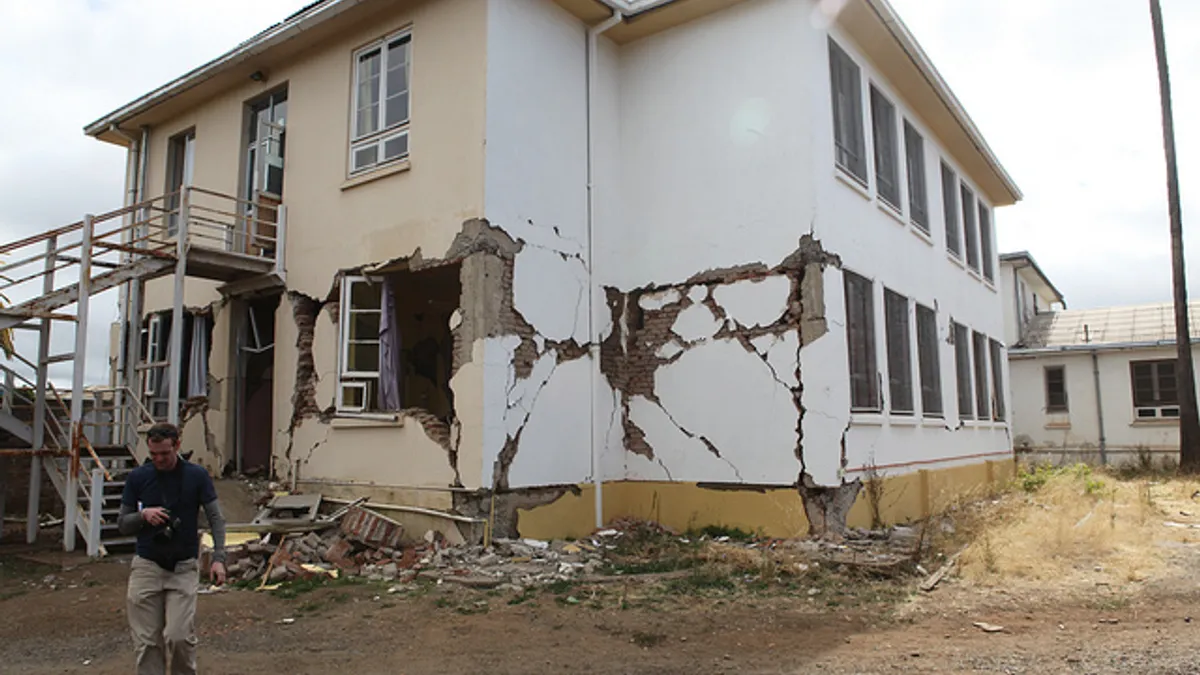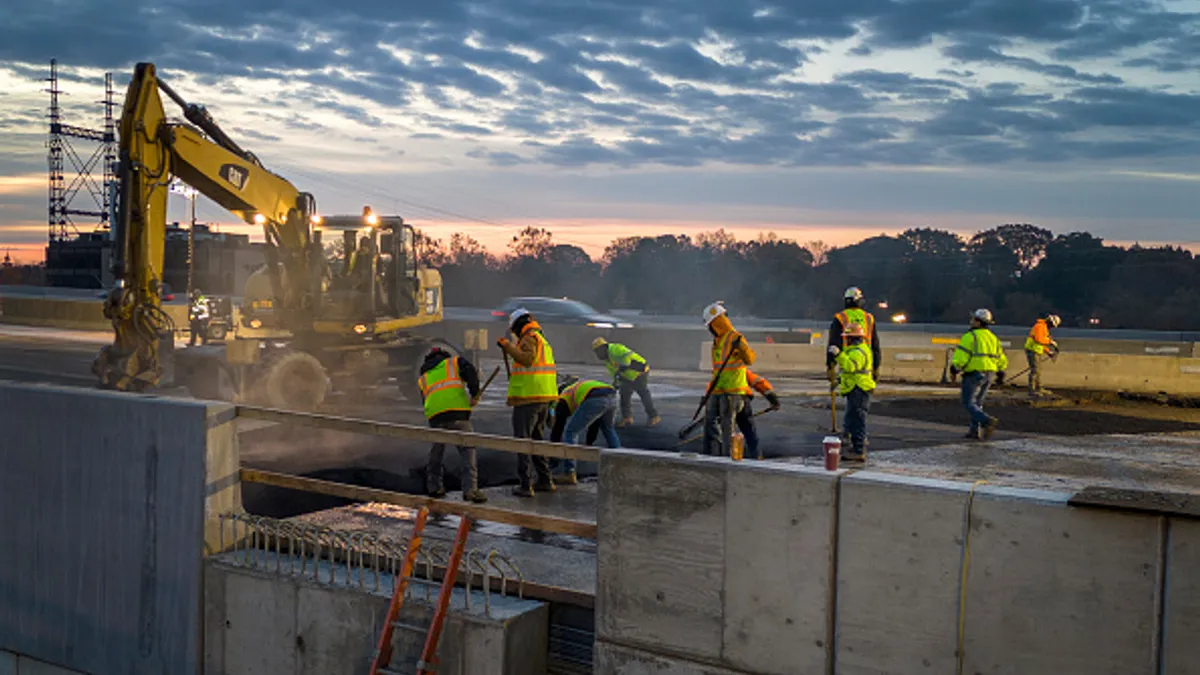On April 16, a 7.8 magnitude earthquake hit the coastal region of Ecuador just west of the country's capital city of Quito, killing approximately 700 people and injuring a reported 30,000 more. Many of those in other countries, the U.S. included, watched televised news reports of rescue crews tunneling and digging through building debris trying to reach survivors and, later, recovering bodies as part of the massive cleanup effort.
Building codes and standards around the world have become a hot topic of conversation, which has led to questions about how earthquake-resistant, or resilient, structures in the U.S. are, particularly in the Pacific Northwest and California. Construction, design and retrofit experts explain their experiences building with seismic threats in mind, as well as ongoing challenges to ensuring buildings are prepapred for the worst.
Major earthquakes prompt seismic code changes
Structural engineer Kelly Cobeen, associate principal at Wiss, Janney, Elstner Associates and board president of the Structural Engineers Association of California, said that ever since the devastating Long Beach, CA, earthquake in 1933, the California engineering and building community has been in a state of constant evaluation of its seismic codes and regulations and serves a resource for the rest of the world in cutting-edge earthquake information and technology.
"We have, over a long period of time, identified systems for resisting earthquakes that are less brittle, more ductile and more resilient," Cobeen said. This examination has forced an ongoing rewriting of building codes, she said, so that new construction is "tougher in resisting earthquakes" as time goes on.
According to Anton Greenville, senior vice president of Balfour Beatty Construction, another event that caused the earthquake-prone areas of California to take a hard look at building codes was 1994's Northridge earthquake, which hit the San Fernando Valley area outside Los Angeles, killing approximately 60 people and injuring as many as 9,000.
That event, he said, triggered reanalysis and rewriting of the code. "The standards being applied today are pretty stringent," Greenville said. The state's residents, he said, "can sleep better" with the knowledge that buildings, for the most part, can withstand the level of known seismic events in California.
Difficulties in retrofitting existing buildings
Experts agree that older buildings and homes, however, are another story. While new construction in the U.S. employs the latest seismic technology, "On the other end of the spectrum, you have our existing building stock out there," Cobeen said.
The city of Los Angeles grabbed headlines last year when it enacted what is widely regarded as the toughest set of mandatory seismic upgrade laws in the nation, requiring the retrofit of approximately 15,000 buildings. The Los Angeles Times reported that some owners could be on the hook for millions of dollars to pay for the retrofits, depending on the type of property. Wood apartment buildings must have their upgrades complete in seven years, while concrete building owners have 25 years.
Cobeen said that unless a municipality, county or state enacts an evaluation and upgrade law like Los Angeles, there isn't much in terms of building codes that addresses existing structures unless the building is being sold, repurposed or undergoing an extensive remodel.
In the 1980s, California mandated that each local jurisdiction develop its own program to address the necessity for seismic upgrades of unreinforced masonry buildings, but it let local officials decide whether to make upgrades and retrofits mandatory or voluntary, according to Cobeen.
Why seismic work 'eats up a large amount' of construction costs
Retrofit work is a challenge, Greenville said, and renovations that exceed 25% of a building's value will trigger some level of seismic upgrades. Balfour Beatty performs a significant amount of school renovation work, and the upgrades are "challenging to the budgets because the seismic work really eats up a large amount of the cost of construction leaving less (for necessities) from tackboards to video monitors," he said.
Unlike Los Angeles, there are no mandatory evaluation and upgrade programs in other parts of the state, Greenville noted, with the exception of critical medical care facilities. Some facilities were required to be upgraded by 2008, others by 2013, and approximately 175 non-critical facilities have until 2030 to comply. However, upgrades are still underway as some facilities qualified for extensions.
Balfour Beatty employs the latest seismic analysis technology in order to determine "the most economical way to achieve compliance," Greenville noted. During a $53 million renovation project of the Zura residence hall at San Diego State University, Balfour Beatty and the project design team used the results of a three-month computer study of 12 different earthquake scenarios to determine the most efficient approach to the renovation.
"The modeling comes up with a less invasive, less expensive way to do (the renovation)," Greenville said. "It's a more cost-effective way. It just takes time to do that."
While Balfour Beatty works on a considerable number of commercial and seismic upgrade projects, owners are not beating down their door to have upgrades done for safety reasons alone, as a typical project can run into the millions. Even for commercial owners who must have the upgrades completed in order to sell their building or change its use, the cost can be a barrier to how much of a renovation they're able to pay for, according to Andy Brown, senior project manager at Balfour Beatty.
Brown noted that on a recent seismic upgrade in Seattle, the cost prevented the owner from doing much more than a shell and core retrofit. "Most of the money went to the seismic," he said.
Surging interest in residential retrofits
Many retrofit projects are residential, and interest usually spikes after an earthquake like the one Ecuador recently experienced.
"Every time there's an earthquake somewhere, that really gets people going," Michael Wieber, of NW Seismic in Portland, OR, said. His company, which provides residential seismic retrofits, sees an increase in requests for estimates whenever a major earthquake makes the news.
Wieber said business — and the discussion around seismic retrofits — really heated up last summer after an article about the Cascadia Subduction Zone (CSZ), which runs along the Pacific Northwest coast, was published in the New Yorker. The article's author, Kathryn Schulz, won a Pulitzer Prize, and Portland residents scrambled to protect their property from the destruction Schulz said was inevitable, according to Wieber.
He said that in a typical year prior to the article, he had approximately 1,000 requests for proposals. After the article was published, he had 1,000 requests in two weeks. Despite the area's potential for earthquakes being common knowledge, he said, "You'd be surprised how many people were surprised."
The threat of shoddy work
However, perhaps more insidious than the threat of an earthquake, Wieber said, was the influx of unqualified retrofit contractors after the renewed interest in the CSZ. Oregon has no licensing requirements for this type of service, and Wieber said the predators that usually show up after a natural disaster made their way to Oregon to cash in on residents' fear of "the big one."
"Everyone is a retrofit contractor now," he said. "Unfortunately, there are lots of cowboys with dollar signs in their eyes that can't pass up the money." Wieber said that, unfortunately, it might only be after a significant earthquake that low-quality work will be brought to light.
California cities are having their own issues with the quality of retrofit contractors, who are not licensed there either, Cobeen said. The California Earthquake Authority has developed retrofit training and provides consumers with a list of companies that completed the program. She added that there has been some discussion about state licensing for retrofit contractors, but there are no real initiatives underway to make that happen anytime soon.




















